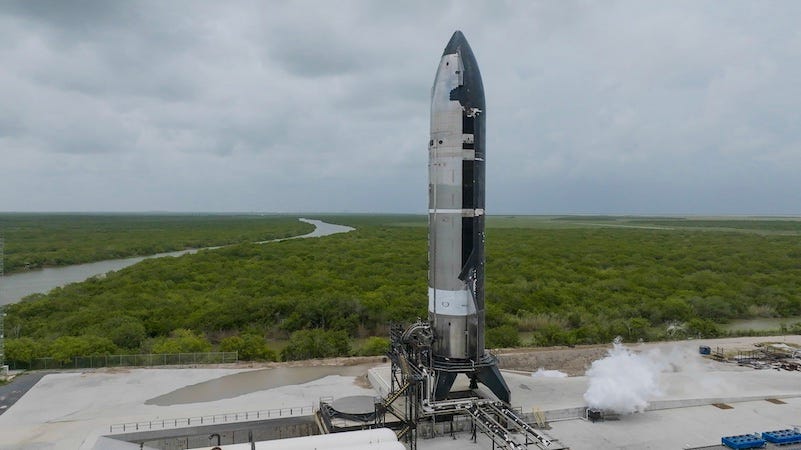Starship Static Fire Anomaly Update Issued by SpaceX
Potential Failure of a Pressurized Tank is Being Investigated
SpaceX has issued an update about Wednesday’s anomaly that reslted in the Rapid Unschedualed Disassembly (RUD) of the Starship spacecraft slated for Test Flight 10. According to the company, after completing a single-engine static fire earlier this week, the vehicle was in the process of loading cryogenic propellant for a six-engine static fire when a sudden energetic event resulted in the complete loss of Starship and damage to the immediate area surrounding the stand. The explosion ignited several fires at the test site which remains clear of personnel and will be assessed once it has been determined to be safe to approach. Individuals should not attempt to approach the area while safing operations continue.
As is the case before any test, a safety zone was established around the test site and was maintained throughout the operation. There are no reported injuries, and all personnel are safe and accounted for.
There are no hazards to the surrounding communities in the Rio Grande Valley. Previous independent tests conducted on materials inside Starship, including toxicity analyses, confirm they pose no chemical, biological, or toxicological risks. SpaceX is coordinating with local, state, and federal agencies, as appropriate, on matters concerning environmental and safety impacts.
Engineering teams are actively investigating the incident and will follow established procedures to determine root cause. Initial analysis indicates the potential failure of a pressurized tank known as a COPV, or composite overwrapped pressure vessel, containing gaseous nitrogen in Starship’s nosecone area, but the full data review is ongoing. There is no commonality between the COPVs used on Starship and SpaceX’s Falcon rockets.
The SpaceX said in a statement posted on its website that the company would like to thank officials and residents in the surrounding Rio Grande Valley communities for their support, particularly first responders who have assisted since shortly after the anomaly took place.





